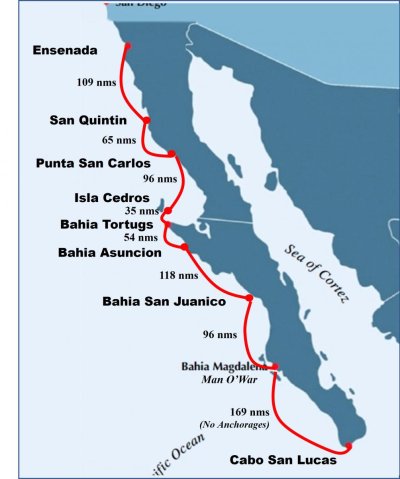ksanders
Moderator Emeritus
The reality is that as folks have mentioned, unexpected weather events do happen. Waves get big quickly, and things can get scary.
This is where the captains experience comes in. Not for survival, but for the perception of survival.
This is an extremely important point, and one that cannot be overemphasized. The captain of the boat NEEDS th know that even though conditions are bad, the boat, and all aboard are going to get through it.
Case in point, some on this thread have mentioned that the times they were in fear of their lives was in bad weather conditions.
Maybe, just maybe the solution to the problem could be achieved through gaining confidence in your boat's capabilities. The reality is that pretty much ZERO well maintained boats on sufficient size, suitable in accommodations for life aboard are at risk of sinking in ANY unexpected coastal weather condition.
How go you gain confidence in your boat??? The answer is simple, use it. Taking it out only on perfect days will not prepare you for rough weather.
Take your boat out in increasingly rough conditions and learn how to handle those conditions. Gain confidence in your skills and the real capabilities your boat already has.
Then, when unexpected weather events occur you will be prepared. You will be confident.
This is where the captains experience comes in. Not for survival, but for the perception of survival.
This is an extremely important point, and one that cannot be overemphasized. The captain of the boat NEEDS th know that even though conditions are bad, the boat, and all aboard are going to get through it.
Case in point, some on this thread have mentioned that the times they were in fear of their lives was in bad weather conditions.
Maybe, just maybe the solution to the problem could be achieved through gaining confidence in your boat's capabilities. The reality is that pretty much ZERO well maintained boats on sufficient size, suitable in accommodations for life aboard are at risk of sinking in ANY unexpected coastal weather condition.
How go you gain confidence in your boat??? The answer is simple, use it. Taking it out only on perfect days will not prepare you for rough weather.
Take your boat out in increasingly rough conditions and learn how to handle those conditions. Gain confidence in your skills and the real capabilities your boat already has.
Then, when unexpected weather events occur you will be prepared. You will be confident.





